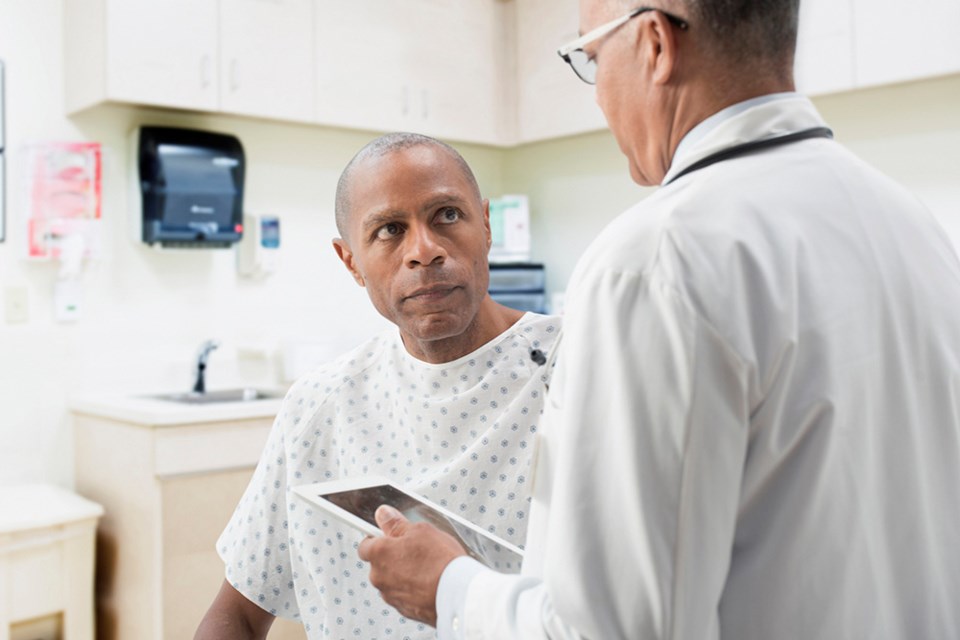With April being designated as , –°¿∂ ”∆µ Cancer is urging men to be proactive about their health.
In an interview with the Peak, –°¿∂ ”∆µ Cancer medical oncologist Dr. Lucia Nappi said testicular cancer is the most frequent cancer in young men, aged 18 to 40.
“It’s an uncommon cancer but it is something that men should be aware of because they can recognize it early on,” said Nappi.
She said the most common presentation for testicular cancer is a swelling of one or both testicles and it’s usually not associated with pain. It’s most common in one testicle. Another common presentation is the presence of lumps or bumps.
Nappi said the best way to identify testicular cancer is to be aware of the risk and to take regular measures to check for it.
“It’s pretty easy to identify, especially if men are confident and know their bodies,” said Nappi. “If you know how testicles feel when they are normal, if there is any change, you will be able to identify it.
“It’s relatively easy to check testicles. They are usually smooth, so if there are any lumps or bumps that are hard by touch, men should be asking for medical advice at that point.”
Nappi said the first step is to go to a physician, who will perform a physical examination. If there is suspicion of testicular cancer, the first level exam is an ultrasound of the testicles. Blood tests can also follow.
“If the ultrasound has suspicions for testicular cancer, the patient would be referred to a urologist,” said Nappi. “The first step is to take out the cancer, which is surgery to remove the testicle. It allows us to actually confirm the diagnosis of testicular cancer and what type of cancer it is – there are many kinds.
“It’s extremely important to be aware of testicular cancer and seek medical attention because this cancer is highly treatable; it’s best to catch it early before it spreads beyond the affected area. When we catch the cancer early on, when it is just in the testicle, surgery to remove the testicle is generally enough, but if it spreads outside the testicle, we have to use aggressive kinds of treatments, including chemotherapy, or more invasive kinds of surgery.”
Nappi said the one of the best times to check testicles is in the shower when the testicles are descended.
“I always suggest to my patients that they do it once a month in the shower,” said Nappi. “It’s much easier to have access to the testicles and to [examine] them.”
Nappi said her function with testicular cancer patients is after they have been to the urologist and had the testicle removed, and after a pathologist has identified the cancer.
“As a medical oncologist specializing in this kind of cancer, I usually see patients after the surgery,” added Nappi.
The follow-up and treatment will vary based on the stage of the cancer. The more advanced the cancer, the more likely that a more aggressive method of treatment beyond surgery will be required. Nappi said follow-ups are usually recommended for five years.
According to statistics from –°¿∂ ”∆µ Cancer, one in 217 males is expected to develop testicular cancer during their lifetime, and one in 4,897 males is expected to die of testicular cancer.
For information on testicular cancer, go to .



